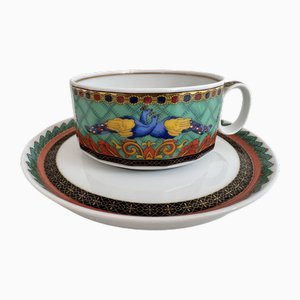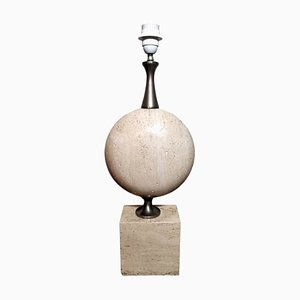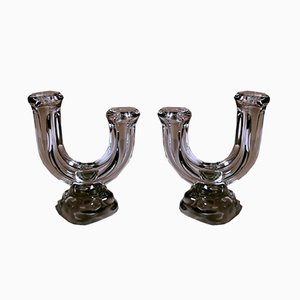We kindly invite you to read the entire , as we try to provide you with detailed technical and historical information to ensure the authenticity of our objects. A sober and linear English silver-plated teapot-chocolate bowl; the softly curved elongated form of rich elegance is supported by four cast feet; the spout and handle also have a very refined design; on the lid is fixed a cast cyma representing a small fruit with leaves. On the bottom the teapot bears the stamp of the James Dixon Company of Sheffield, with the classic trumpet with banner and the full name; from these elements, we can tell that the object was made between 1890 and 1895 in Dixon's factory in Sheffield. James Dixon and Sons was founded in Sheffield, England, in 1806 and was one of the leading British manufacturers of the Industrial Revolution, helping to give the city its global reputation for manufacturing excellence. Initially working with pewter, electroplated, Britannia Metal, and nickel silver, the company honed its skills over the years and became synonymous with sterling silver and silver-plated cutlery and hollowware. Established customers around the world, from consulates to royal families, have always been the company's clientele; their demand for the highest quality has always been the benchmark for the workshops. The company exhibited at the Great Exhibition of 1851, receiving numerous awards in different classes for silver and Britannia metal. Dixon's 1879 cost book includes designs by Christopher Dresser, recorded from 1880, which were produced until at least 1895, according to the trade catalog published that year. The first corporate trademark of the trumpet and banner was granted in 1879, while the second with the name was added in 1890. Some authors claim that the trumpet and banner trademark was officially registered in 1881, although it was already in use before then. In the 1920s the company began to use stainless steel for the production of flat and hollowware, and production of silver and silver-plated wares declined. The stainless steel spoons and forks produced by James Dixon & Son bore the names “staybrite” and “Firth,” since Firth Brown was the company where “staybrite” steel had been invented in the 1910s.
In 1920 the company was converted into a limited liability company, and in 1930 William Hutton & Sons Ltd of Sheffield was absorbed by James Dixon & Sons Ltd. In the 1980s the company had a financial meltdown and production at Cornish Place closed in 1992. The teapot is in good condition. Measures width cm.26, depth cm.12, height cm.25.
Nous vous invitons à lire l'intégralité du document, car nous nous efforçons de vous fournir des informations techniques et historiques détaillées afin de garantir l'authenticité de nos objets. Théière et bol à chocolat anglais en métal argenté, sobre et linéaire ; la forme allongée aux courbes douces, d'une riche élégance, est soutenue par quatre pieds en fonte ; le bec et l'anse ont également un design très raffiné ; sur le couvercle est fixée une cimaise en fonte représentant un petit fruit avec des feuilles. Sur le fond, la théière porte le cachet de la James Dixon Company of Sheffield, avec la trompette classique avec la bannière et le nom complet ; grâce à ces éléments, on peut dire que l'objet a été fabriqué entre 1890 et 1895 dans l'usine de Dixon à Sheffield. James Dixon and Sons a été fondé à Sheffield, en Angleterre, en 1806 et a été l'un des principaux fabricants britanniques de la révolution industrielle, contribuant à donner à la ville sa réputation mondiale d'excellence manufacturière. Travaillant initialement avec l'étain, la galvanoplastie, le métal Britannia et le maillechort, l'entreprise a affiné ses compétences au fil des ans et est devenue synonyme de couverts et d'ustensiles en argent sterling et en argent plaqué. Les clients établis dans le monde entier, des consulats aux familles royales, ont toujours été la clientèle de l'entreprise ; leur exigence de la plus haute qualité a toujours été la référence pour les ateliers. L'entreprise a participé à la Grande Exposition de 1851 et a reçu de nombreuses récompenses dans différentes catégories pour l'argent et le métal Britannia. Le livre des coûts de Dixon de 1879 comprend des modèles de Christopher Dresser, enregistrés à partir de 1880, qui ont été produits au moins jusqu'en 1895, selon le catalogue commercial publié cette année-là. La première marque d'entreprise de la trompette et de la bannière a été accordée en 1879, tandis que la deuxième avec le nom a été ajoutée en 1890. Certains auteurs affirment que la marque "trompette et bannière" a été officiellement enregistrée en 1881, alors qu'elle était déjà utilisée auparavant. Dans les années 1920, l'entreprise a commencé à utiliser l'acier inoxydable pour la production d'articles de vaisselle plate et creuse, et la production d'articles en argent et en plaqué argent a diminué. Les cuillères et fourchettes en acier inoxydable produites par James Dixon & Son portaient les noms de "staybrite" et "Firth", car c'est dans l'entreprise Firth Brown que l'acier "staybrite" avait été inventé dans les années 1910.
En 1920, l'entreprise a été transformée en société à responsabilité limitée et, en 1930, William Hutton & Sons Ltd de Sheffield a été absorbée par James Dixon & Sons Ltd. Dans les années 1980, la société a connu un effondrement financier et la production à Cornish Place a cessé en 1992. La théière est en bon état. Elle mesure 26 cm de largeur, 12 cm de profondeur et 25 cm de hauteur.
























Contactez-nous
Faire une offre
Nous avons remarqué que vous êtes nouveau sur Pamono !
Veuillez accepter les Termes, Conditions et Politique de Confidentialité
Contactez-nous
Faire une offre
Vous y êtes presque!
Pour suivre votre conversation sur la plateforme, merci de compléter votre enregistrement Pour procéder avec votre offre sur la plateforme, veuillez compléter l’enregistrement.Envoyé!
Merci pour votre message, un membre de notre équipe vous contactera rapidemment
Si vous etes un professionnel du design, merci de vous inscrire ici pour pouvoir profiter de bénéfices exclusifs